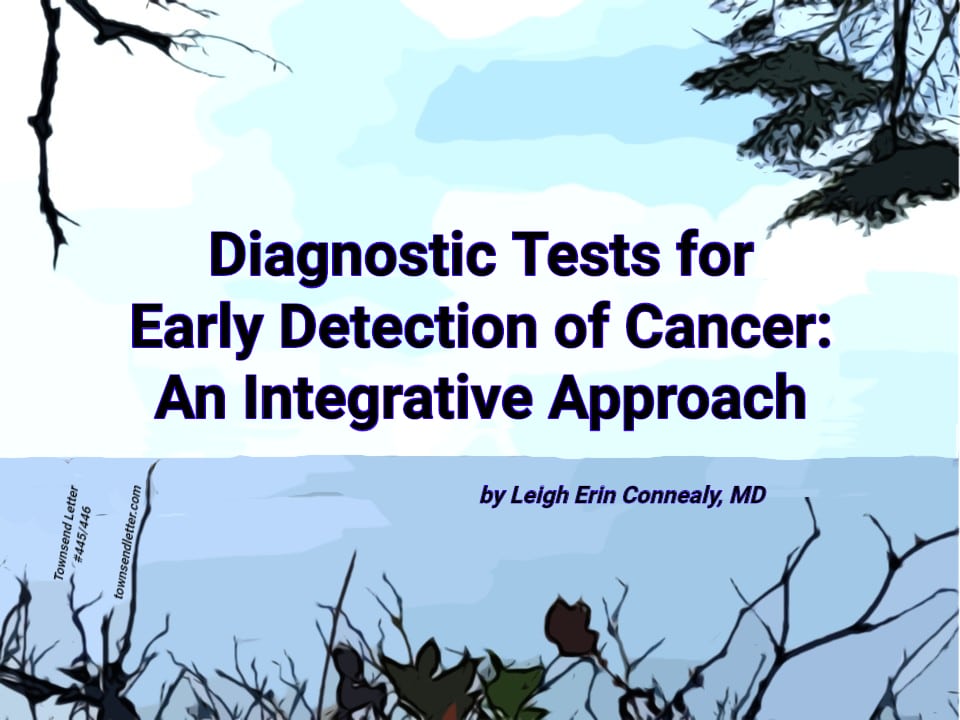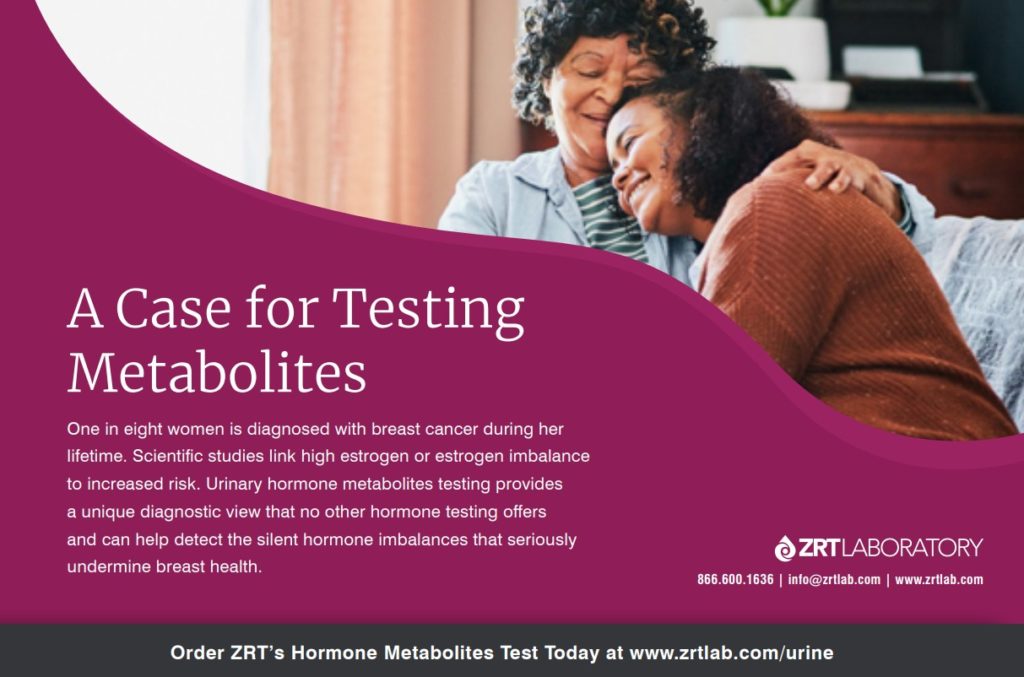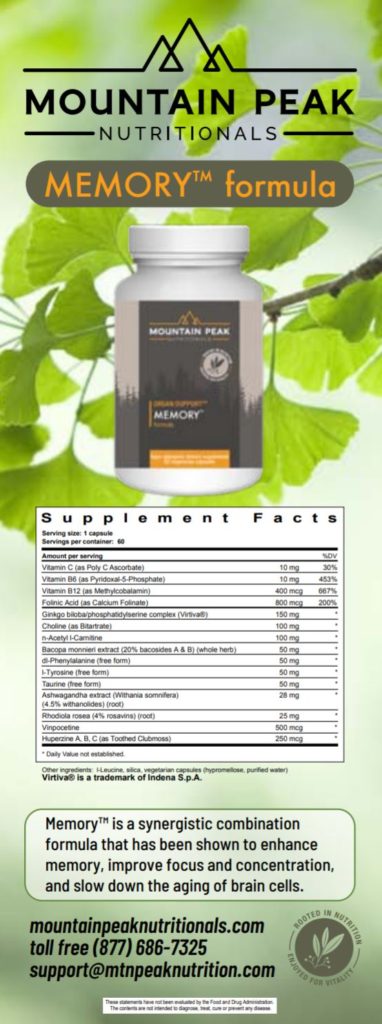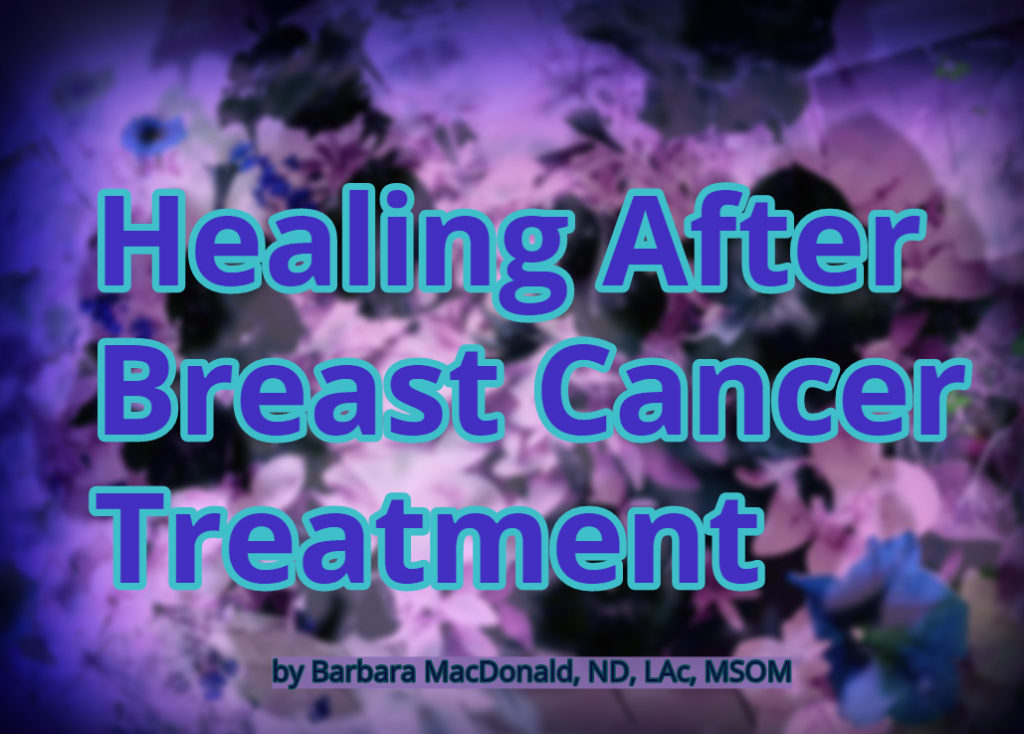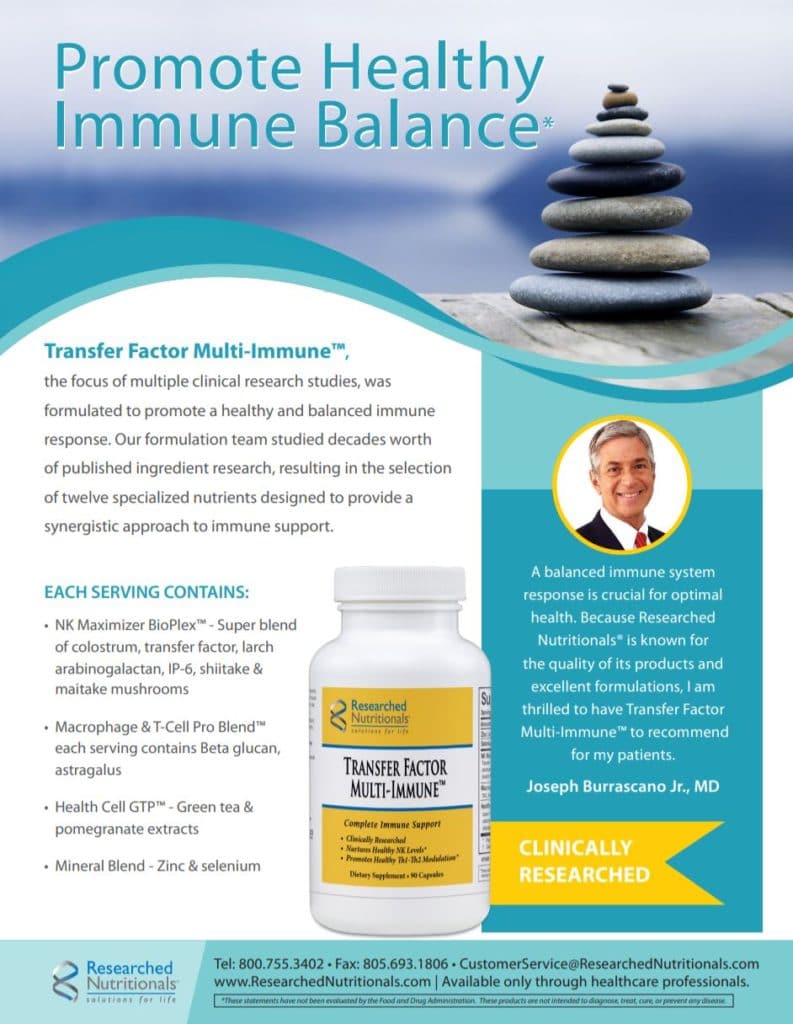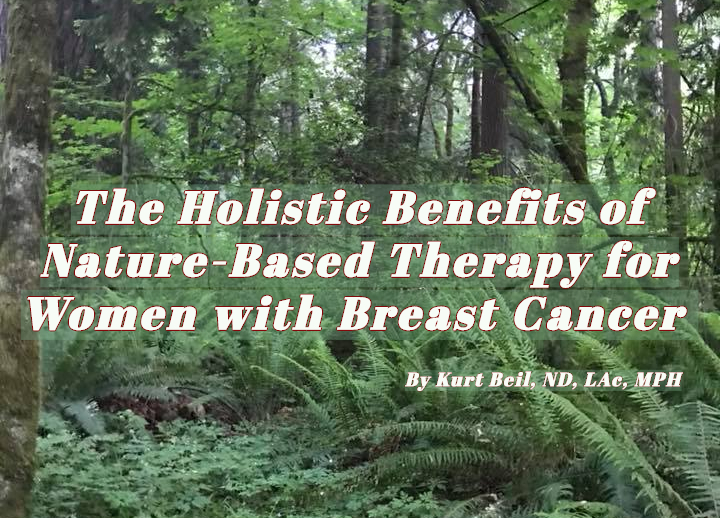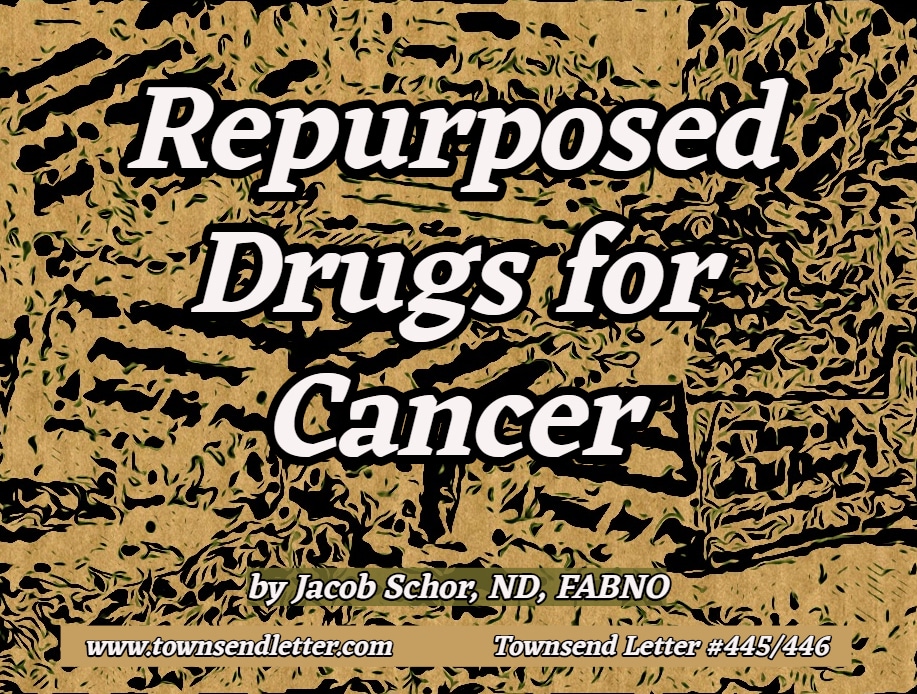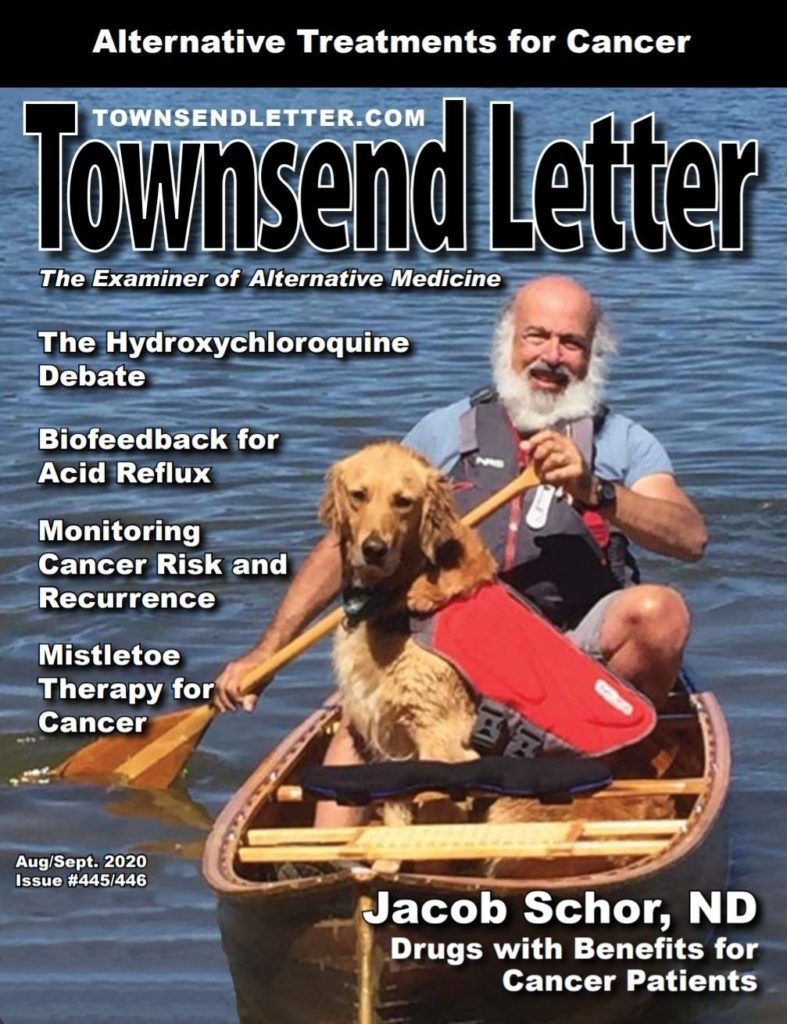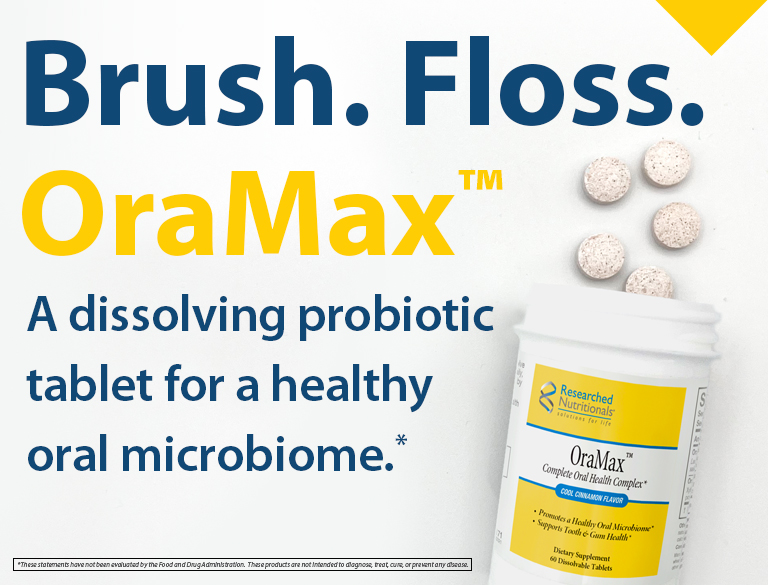By Devaki Lindsey Berkson, DC
Summary
Estrogen was once an extremely popular hormone. Estrogen replacement was used as an anti-aging drug by multiple millions of women in the United States and all over the world.1 Estrogen therapy was even standard of care to treat certain breast cancers. However, once the Women’s Health Initiative2 (WHI) hormone trials were prematurely stopped due to early negative conclusions (July 9,2002), claiming prescribed estrogen caused cancer and heart disease, these scary headlines prompted many doctors and women to become estrogen-phobic.
Nonetheless, as crazy as it seems, within only months after the WHI first published negative estrogen news, re-analyses started to emerge from scientists and statisticians at prestigious institutions. These new “look-sees“ of the WHI statistical data painted completely different stories.3-15
But the emerging “good news” never made headlines like the initial “bad news.” The bad news? Estrogen can “cause” breast cancer. This turned out to be “wrong news.”
The good news: Estrogen therapy in healthy women significantly “protects against” breast cancer. This good news continued to accumulate over the past two decades, without influencing “standard of care,” without entering the clinical trenches of most doctors or the understanding of most women—until December 2019.
In December 2019, a 19-year reanalysis16—looking back from an almost 20-year vantage point with new statistical in-depth collaborative investigation—was presented at the San Antonio yearly breast cancer symposium. Conclusions by a consortium of 12 highly respected cancer centers17 stated—once and for all—estrogen protects breasts. This re-analysis makes it finally undeniable that estrogen is not the enemy; rather, it protects breasts from cancer. Unfortunately, many doctors and women continue to not know about this news nor translate it into their practices or lives.
Even though no one knows exactly how breast cancer starts, it does not seem to be due to estrogen, but rather to cancer stem cells—a totally different kind of cell that has nothing to do with estrogen. Most older women, who naturally have less estrogen, have higher risks of being diagnosed with breast cancer than younger more estrogenized females. Pregnancy, which is the “highest estrogenic time” of life in any woman, is protective against breast cancer. In fact, there is a 70% decrease in breast cancer risk associated with a full-term pregnancy before the age of 18. It’s also been shown that pregnancy is safe after treatment of breast cancer, even among estrogen receptor–positive women patients (ER+ means pathologists identify estrogen receptors in the tumor). Also, no benefits have been proven for aborting at the time of pregnancy in breast cancer patients,18 so lowering the levels of estrogen didn’t cause further improvement in outcomes.
Medical practitioners thought tamoxifen worked because it was an anti-estrogen. But tamoxifen works in a wide variety of anti-cancer mechanisms, not just by tamping down estrogen. In fact, tamoxifen can often raise estrogen levels. In the HABITs study (which concluded that hormones cause breast cancer), only the women on tamoxifen turned out to have higher risk of recurrences (though this was not easy to read within the inner depths of the study and was thus was not noticed by many doctors).
The appreciation of estrogen as “foundational” in protecting many aspects of health is rapidly growing. A few examples are estrogen protects bones from fracture,19 blood vessels from hardening,20 brain from dementia,21,22 shields mitochondria (energy-producing cells) from damage,23 allows bodies to benefit from lifestyle changes as it promotes epigenetics,24 makes it easier to keep a smaller waistline,25 and maintains heart26 and kidney27-29 health.
Estrogen therapy is as close to an effective anti-aging tool that we have, even maintaining life-promoting telomere length.30 The longer and healthier our telomeres (the tips on our DNA), the longer and healthier we live. In fact, estrogen reduces premature death from quite a large number of possible causes.
My Story
Twenty-six years ago, I was diagnosed with breast cancer. This was not found by mammogram but by self-palpation while in the shower. I was the very first woman in the US diagnosed with a pure mucinous cancer, a very rare cancer back then, more common now. Neither my radiologist nor oncologist had ever treated a pure mucinous cancer at that time.

I was a DES (diethylstilbestrol) daughter, meaning my mother had been given this drug when pregnant with me. DES was banned in 1971 as the most cancer-causing substance ever invented at that time. DES was the first synthetic estrogen (50 times stronger than bio-available estrogen) and given to pregnant women from 1938 to 1971 as a prenatal vitamin or to stop threatened miscarriages. Many DES daughters turned out to manifest breast cancer in their mid-40’s. I was one of the very first ones.
As no one had ever treated breast cancer in a DES daughter before, I kept asking, “How do you know that what you are recommending is right for me?”
They suggested I do standard protocol, like radiation. However, even though my doctors had never treated pure mucinous tumors before, or ever treated a documented DES daughter before, after several weeks of sleuthing (pre-Internet), I found the only two groups (in the Netherlands) with human studies at that time on this type of tumor.
Due to the time changes, I had to call the principal leaders on these investigations in the middle of the night and leave messages about my circumstance. As the fickle finger of fate would have it, one head investigator didn’t call me back until a very dramatic moment: I was sitting on the table getting the grid put on my chest for my first radiation treatment.
This doctor/scientist firmly recommended, “If I were you, I would not do radiation. We have learned that radiation causes fibrosis, which makes it impossible to palpate a tumor in the breast if cancer returns. Totally pure mucinous tumors are never picked up by mammograms, only by palpation. If you have radiation, you won’t be able to monitor yourself appropriately. That’s what we advise all our pure mucinous breast cancer patients to do: not get radiation and do vigilant breast exams.”
I got off the table and told the radiologist I wasn’t going to do radiation therapy. I explained to this female radiologist (wife of one of the local cancer docs) what the experienced researcher had told me. I further explained that this scientist was one of the only two research teams in the world (at that time) studying this unique tumor type. They had published a study on 95 patients with this unique tumor,31 and understood protective details for patients with this unique tumor.
The radiologist spat angrily back, “F… him!” (I kid you not.) “If you don’t do this radiation, you are certainly going to die!” That was 26 years ago.
Then my cancer doctors told me that I didn’t need chemotherapy. Hmmm. Reading the science, it was becoming clearer to me (even way back then) that stem cells caused cancer more than the daughter cells found mostly in primary tumor loads. I decided to do my own chemo. After a lot of investigation, I found a black-market chemo from Switzerland (called “Ukraine”) that was supposed to eradicate both daughter cancer cells and cancer stem cells, but not harm healthy cells. So, I did 40 rounds of this chemo with a willing local doctor.
Then my cancer doctors recommended tamoxifen. But I was one-of-a-kind—a lone woman with a pure mucinous tumor and a history of DES—so it seemed they didn’t really know if it would help me and this special situation…or not. They were fitting me into the same box that all other breast cancer patients were in.
So I called Craig Jordan, the man who put tamoxifen on the map. Grateful to get him on the phone, I asked: “I have this rare tumor and this rare in-utero exposure to DES. Do you think I’m really a candidate for tamoxifen?” Dr. Jordan was thoughtful and candid, “I have to be honest with you. No one in your situation has ever asked me that. Let me look into this. I’ll get back to you in a week.”
To his credit Dr. Jordan indeed called back within a week and humbly explained, “If I were you, I wouldn’t take tamoxifen. I think it might make DES daughters worse. Not sure, but I don’t have a good feeling about it.” Stunningly enough, I still get yelled at by cancer doctors today telling me I made a mistake not taking it, even though its main scientist suggested otherwise!
After all I read, it made sense to me to take estrogen therapies, even though not one of my colleagues (functional or conventional) agreed with me. I was on my own. I waited five years just to be safe, but at year six Dr. Wright wrote me the first bioidentical script for 2-methoxyestradiol (2 MEO), which I had figured out would reverse the immunosuppressive issues started by DES in the womb. I was the first person in the US to take bioidentical 2 MEO, so Dr. Wright and I had to figure out the dosage. I also began hormonal therapies of estradiol, estriol, progesterone, and testosterone.
When I saw my breast cancer doc for yearly exams over the past two decades, she would say, “You look better than any of my other patients. But stop taking estrogen. It will kill you.”
Thank god, I’ve been well. At my ripe age, when many are winding down, I’m still winding up. My breast cancer doctor is 20 years younger than I am, but truthfully, as smart and nice as she is, she looks 20 years older as she hasn’t taken hormone therapies.
This 19-year reanalysis of the Women’s Health Initiative confirms my own research. (For those who want to know, I take 125 mcg /2MEO methoxyestradiol/day, along with .35 mg estradiol/.75 mg estriol BID labially, along with 3 mg testosterone/day mucosally.)
By the way, there are a lot of nuances to taking 2 MEO. I have a webinar on it available at drlindseyberkson.com. It’s hard to get. I am trying to write the monograph that the FDA requires to help move this along.
I worked at a hormone/nutritional family practice clinic, the Wiseman Family Practice clinic, in Cedar Park, Texas, for six years. I asked Dr. Richard Wiseman, who had been in practice for almost 50 years, what he thought about hormones. He ran several Ironman marathons a year, looked like he stepped out of an Irish Spring commercial, and had been prescribing bioidentical hormones all those years. Dr. Wiseman said, “If you took 100 people who all exercised and ate well, you could still pick out those who were on hormones: they will have shinier skin, more youthful voices, straighter posture, thinner waistlines, look younger, and even appear more confident.”
Hormones protect so many organs—from the collagen in our skin to the volume of our hippocampus (where our memories live in the brain).
I am honored to be able to write this article to spread the word that the science shows estrogen is once again okay to prescribe and safe to take.
Estrogen’s Public Profile
Estrogen has had a bad rap for over 20 years. Many women, upon hearing the word “estrogen,” unconsciously cover their breasts with their arms in worry. Estrogen makes them think of the enemy — breast cancer. Women, physicians, and scientists alike have come to equate estrogen with being a tricky and potentially dangerous player. Many contemporary doctors and oncologists regard estrogen as fuel for breast cancer.
This is understandable when you look at the history of estrogen and the uterus. As women were being prescribed estrogen to achieve staying “feminine forever,” in the 1970s the incidence of cancer of the uterus suddenly increased four to eight times more in women taking estrogen therapies versus ladies who were not taking it.32
It was soon figured out that estrogen replacement was causing the lining of the uterus to “grow out of control”—the hallmark for cancer. This estrogenic potentially cancerous effect was then entirely controlled by adding synthetic forms of progesterone, called progestins, to estrogen scripts. The progestins successfully blocked overgrowth and warded off the uterine cancer. The spike in uterine cancer in women taking estrogen stopped. (Bioidentical progesterone was also shown to protect the uterus from estrogen.33-35) Thus, the standard of care by many mainstream doctors has been to prescribe a combo therapy of estrogens plus progestins in women that still have a uterus.
It then seemed like an intuitive leap to the idea that progestins would have the same protective effect at the breast. Thus, many women have been prescribed a combination of estrogen and progestins as hormonal therapy, thinking the progestins were protecting both the uterus and the breast. This turns out not to be the case.
Estrogen’s Roller Coaster History
For over 40 years, estrogen therapies were the biggest-selling pharmaceuticals in pharmaceutical history. Women were prescribed estrogen therapy, without any large randomized studies proving that estrogen therapies were helpful or safe (although the PEPI studies36 were a smaller randomized study run on 847 women that showed that women on estrogen for over three years had better heart health without a rise in blood pressure or issues with insulin).
For decades doctors and patients felt that estrogen kept women “feminine forever.” Up until 2002, estrogen was the recommended standard of care for menopause. Everyone was on board the estrogen train. Prestigious medical journals, respected research institutions, and recognized expert cancer doctors all accepted the idea that estrogen was safe for breasts and that estrogen did NOT increase the risk of breast cancer.
Researchers were concluding that women taking hormone therapy were less likely to develop breast cancer. In 1987, a consensus conference reported in the British Medical Journal: “Well-defined epidemiological studies of estrogen therapy do not suggest an overall increase in the risk of breast cancer in postmenopausal women.”37 These results were replicated. This is the hallmark of great science—independent labs demonstrating the same results. A multi-centered report even found that women with the dangerous breast cancer genetic glitch, the BRAC1 gene, had no increased risk of breast cancer when on hormone therapies for an average of 4.3 years.38
You heard about Angelina Jolie having both her breasts removed because she has the BRAC1 genetic mutation. Women with this genetic mutation are at a greater lifetime risk of breast cancer (as well as many other cancers) than women without this glitch. But a medical oncologist at the Sunnybrook Regional Cancer Center in Toronto studied 472 BRCA1-positive postmenopausal women, half of whom were taking hormones and half not. She concluded that “among postmenopausal women with a BRCA1 mutation, estrogen use, averaging four years, was not associated with an increased risk of breast cancer; in fact, in this population, it was associated with a significant decreased risk.”39 (I wrote about this protective effect of estrogens in BRCA1 breast cancer patients in Safe Hormones, Smart Women.40)
In a 1993 editorial in the New England Journal of Medicine, two endocrinologists from Harvard stated, “On the basis of the available evidence, we recommend that all postmenopausal women be considered for hormone replacement therapy and be educated about its risks and benefits.”41
Study after study found no consistent increased risk of breast cancer in women who took estrogen for five years, ten years, or 15 years.42 A later Japanese study on 9,000 women replicated this data.43
Through the 20th century, it was well accepted that estrogens did not cause breast cancer. However, the Women’s Health Initiative prematurely stopped of one of the hormone study groups in July 2002. Then everything changed.
The Women’s Health Initiative (WHI)
The NIH started the WHI because Americans are getting older and sicker at a rapid rate, and the NIH wanted to know how to protect aging women while not toppling Medicare.
How old are we getting? The 65 and over population is projected to more than double from 6.4 million in 2016 to 14.6 million in 2040 (a 129% increase). By 2060 there will be over 98.2 million Americans over the age of 65. To try to protect Medicare from being unable to handle this enormous health care load, the Women’s Health Initiative 44,45 was set into motion.
The Women’s Health Initiative (WHI) was organized by the US National Institutes of Health in 1992 to study the health of postmenopausal women and was scheduled to be completed in 2007. The WHI was an entire series of studies looking at aging women every which way. To date, WHI has published over 1,400 articles and funded 289 related research trials looking at diverse aspects of health such as diet, bone health and nutrients, heart health, the effect of sitting on hormones and the risk of hormone-driven cancers, hormones and arthritis (linking estrogen to reduced joint pain46), cholesterol levels in aging women and longevity (reporting that higher levels of cholesterol in women over 65 are inked to living longer and better47) and, of course, very large randomized trials looking at hormone therapies. From 1993 to 1998, the WHI enrolled 161,809 women aged 50-79 years at 40 different clinical centers.
The WHI wanted to create the first very large randomized studies on hormones. Everyone who was part of running the trials assumed the results would prove what years of giving estrogen to millions of women and previous trials had shown (though not in large randomized scientific manner): that estrogens slowed down aging and kept women younger for longer.
At 40 centers nationally, researchers ran two different groups of hormone trials, called “arms”—one with women given only estrogen and the other arm given estrogen and synthetic progesterone. Premarin, a form of estrogen found in horse’s urine, was the estrogen used in the study. The other arm gave women Premarin plus a synthetic progestin.
July 9, 2002—a fateful day for hormones. Before the studies were supposed to end, at the five-year mark, the regulatory Data and Safety Monitoring Board recommended both arms of the study be stopped. This premature decision was not unanimous; some board members wanted to stop the study and others didn’t. The recommendation was based on results from the combo hormone study arm (synthetic progestins + estrogen), which showed, at five years of follow-up, a statistically significant increase in invasive breast cancer and an increase in heart disease adverse events.
At first blush, it looked like women on hormone replacement were at higher risk of getting the very diseases that hormones were supposed to protect against. Many were shocked. It looked like hormones were causing the very issues they were being prescribed to prevent.
Huge numbers of doctors in the US stopped writing scripts for hormones. In Europe, this didn’t happen as much; European doctors tend to write scripts for natural hormones or estriol, the anti-cancer estrogen, a lot more often.
Doctors and patients alike started to think of estrogen as the enemy. (If you want an in-depth, easy-to-read, detailed account of this whole unfolding, read Safe Hormones, Smart Women.)48 Due to the results of the WHI study, estrogen was getting blackballed.
Both arms of the study were finally officially stopped on February 2, 2004. However, by this time, 2004, re-analysis by the monitoring committee was demonstrating different results than the mostly negative ones from two years earlier. It was finding the following:
- Hormone therapies were being linked to increased risk of stroke. But this increase was very small and almost half the women had dropped out of the study, so there were a lot of statistical issues49 and respected experts were questioning the statistical significance,
- A trend toward dementia,
- No increase or decrease of coronary disease,
- A reduction in bone fractures and
- No increased risk of breast cancer. (This fact has not gotten out to the public or to docs and was buried on page 18 in one small paragraph of the 2004 re-evaluation.)
In fact, Dr. Leon Speroff, the iconic gynecologic physician who authored the classic book that most gynecologists and obstetricians are trained with (Clinical Gynecologic Endocrinology and Infertility) and long-time professor at the University of Oregon, concluded in 2005 and again in 2008 that the 2004 results did not demonstrate the same nor agree with the first 2002 monitoring board statements.
After looking at every statistical nuance of the WHI, Dr. Speroff said50,51:
Long-term postmenopausal hormone therapy is not precluded by the results reported by the WHI. There continues to be good reason to believe that there are benefits associated with treatment, including improvement of quality of life beyond the relief of hot flushes, maximal protection against osteoporotic fractures, a reduction in colorectal cancers, maintenance of skin turgor and elasticity, and the possibility of primary prevention of CHD and Alzheimer’s disease.
Dr. Speroff clearly said that the WHI did not show an increased risk of breast cancer.
I summarized the issues of the WHI in Safe Hormones Smart Women:
- Women in the second group on horse estrogen had less breast cancer. After 7.1 years on horse estrogen itself (without synthetic progestins), they had 18 to 44% less breast cancer depending on the re-analyses you read.52 Breast cancer (localized to breasts) was reduced by 31% and ductal breast cancer was reduced by 29%.53,54
- A 10-year follow-up said the decreased incidence of cancer was persisting up to 10 years, even with an average of 5.9 years only of using estrogen.55 Now persistent benefit is being noted up to 19 years!
- There was an apparent protective effect of the horse estrogen on breast cancer incidence in all categories for women at lower risk (who didn’t have first-degree relatives with breast cancer or fibrocystic breasts).
- Women who had been on synthetic progestins in the past (before this estrogen-only study) were at greater risk. Those on estrogen only before this study did not have increased risk.
- After 7.4 years of estrogen only, younger women (50 to 59 years of age), monitored by sophisticated imaging studies, actually had slower growth of calcified plaque in their arteries, meaning they had a heart-protective effect from the estrogen.56-58
In an article titled “Women’s Health Initiative is Fundamentally Flawed,” the authors (from Loyola University Stritch School of Medicine) said that the WHI findings were wrong. They summarized quite a large number of colleagues and experts challenging the WHI conclusions.
Fred Naftolin, PhD, a scientist from Yale who was also on the executive committee of the International Menopause Society, was worried that doctors were denying women a chance to take estrogen and as a result were withholding preventative care, especially for their patients’ hearts. Heart disease is the number one killer of women, not breast cancer.59
Other re-analyses by respected well-known statisticians were also showing that women in the estrogen-only arm had 33 to 44% less risk of breast cancer. But these positive reports failed to make headlines to get sent to gynecologists in FAXes from their associations.60,61 Doctors and patients were not hearing the good news. The revised news.
Scientists and physicians are in love with randomized trials. They’ve become the holy grail of guidance for practicing medicine. But they are fraught with disaster. It’s been shown by a shocking multi-centered study, headed by Stanford’s Prevention Research Center, Department of Medicine, that, get this— one out of every three randomized trials, when re-analyzed62—comes out different, often making the first conclusions wrong. And, thus, recommendations to patients, wrong!
But it’s often the first scary (even if wrong) “loud” conclusions that make headlines. These are especially difficult to get out of the medical and cultural consciousness. Especially if litigation is involved.
Right after the first scary (and repeatedly found wrong) warnings about hormone therapies came out, Wyeth was sued by 6,000 women and had to pay out billions of dollars. Between the fear of the negative comments on hormones and the litigious atmosphere in the US, hormone therapy drastically dropped down the proverbial dark rabbit hole.
Fear of being sued had a lot to do with keeping the new, improved, and safer perspectives with these re-analyses from reaching women far and wide.
Avoiding estrogen therapies for most women in general, and any kind of high-risk women, became the standard of care. Even doctors that believed hormone therapies to be safe, worried about their licenses if something were to go wrong.
The sad reality is that up to now, many doctors, gynecologists, and patients continue to be frightened by hormones, or reluctant to prescribe hormone therapies. Women at high risk for breast and other hormonally driven cancers are told that they are never candidates for hormone replacement. Hormones came to make doc and patient alike, uncomfortable. Through medical lenses, hormones appeared treacherous. All based on the WHI—which had so many disparaging re-analysis, that mostly never saw the light of day.
Summary of Criticisms of the WHI63
- It only used one protocol of hormones (not individualized or diverse options).
- The age of the participants was older, many years away from hormone exposure.
- The majority of women were obese (which is a significant risk factor for breast cancer).
- The study had an extreme number of dropouts of participants.
- The recommendations could not be validly generalized to all women.
- Many of the WHI’s conclusions were ultimately found to be inaccurate.
Worst kicker of all has just been realized in 2020! The WHI had huge design flaws that when analyzed, the flaws themselves pointed to the protection of estrogen on breast tissue. Dr. Avrum Bluming wrote about these serious statistical defects in the editorial section of The ASCO Post, in early 2020, just after the 19-year re-analysis was presented in San Antonio. Dr. Bluming wrote:
An explanation of the hormone replacement therapy “anomaly’ [huge flaw, Berkson’s comment] was published in 201864. It was caused by a lower-than-expected risk in the control group, against whom the combination hormone replacement therapy population was measured. This lowered risk appears to have resulted from including within the placebo group women who had taken estrogen prior to joining the study and who were randomly assigned to that placebo arm. When the risk was recalculated after these women were excluded, the increased risk observed among those randomly assigned to combination hormone replacement therapy had disappeared.
In other words, some of the women in the control group had taken estrogen therapies earlier in their lives. This protected them against breast cancer. This gave the control group a lower incidence. This made the group on hormones falsely “appear” to have an increased incidence! What a statistical kettle of fish!
“This remarkable analysis,” further states Dr. Bluming, “should have been incorporated into the 19-year interpretation of the results presented in San Antonio and published in The ASCO Post article.”
Wow. This shows just had difficult it is to run randomized trails without “confounding factors” that make results nothing but questionable. Dr. Bluming also states that this may take progestins out of the picture as risk factors for breast cancer. However, there are plenty of articles linking synthetic progestins to many increased downstream health consequences.
Decline in Breast Cancer
One of the clinchers in the media and even in scientific studies that the WHI’s conclusions were sacrosanct, was the recent decline in breast cancer incidence. Many said, “See, when women went off hormones (after the WHI) they got less breast cancer. This proves the HRT-breast cancer link.”
I realized early on, about 2004 and 2005, that women were going to be missing out on hormones. Scouring the literature, I saw the reanalyzes that were not making headline news. I became passionate about getting the accurate science “out” so women wouldn’t miss out on lifesaving and breast-saving hormones. That’s why I wrote Safe Hormones, Smart Women. All the information inside that book has been vindicated.
As I took a deep dive into the incidence data, it became clear that breast cancer rates started to slow down before the WHI results came out and use of HRT went down! This is critical to understand. They did not go down because estrogen scripts went down. They went down because our surveillance has gone up.
The conclusion that going off hormones secondary to the WHI started the decline in breast cancer incidence is wrong. But this is not known by many doctors, patients, or pharmacists.
Dr. Christopher L. Li from the Division of Public Health Science at the Fred Hutchinson Cancer Research Center65 (one of the cancer center names on the WHI 19-year reanalysis) looked at data from 13 cancer registries from 1995 to 2004 to get a handle on what was causing reduced incidence of breast cancer cases.
They found that breast cancer rates started to go down around 1998, well before 2002 when the WHI brouhaha hit the media. The decline, they stated, was mostly likely due to more and improved breast cancer screening. The WHI didn’t start the decline, though in fact, now that we see how protective estrogen therapy is on breast tissue, it may very well have contributed to breast cancer incidence by denying women protective hormonal therapies.
WHI Re-Analyzed by 12 Prestigious Cancer Centers
From 1993 to 1998, more than 27,000 postmenopausal women, aged 50 to 79 years, with no prior breast cancer, enrolled in one of two randomized, placebo-controlled WHI trials implemented at 40 US centers, with follow-up through September 2016.
- Women with an intact uterus received conjugated equine estrogens (CEE; 0.625 mg/day) plus MPA (2.5 mg/day) or placebo (n = 8102) for a median of 5.6 years.
- Women with prior hysterectomy received CEE alone (n = 5310) or placebo (n = 5429) for a median of 7.2 years.
- After about 19 years of follow-up, CEE+MPA resulted in a significant 29% increased risk of breast cancer
- Whereas CEE alone resulted in a significant 23% reduction in breast cancer incidence.
- There was a significant 44% reduction in deaths from breast cancer with Premarin.
- There was a 45% increase (borderline significance) in breast cancer deaths with CEE+MPA (Premarin plus the synthetic progestin MPA).
Re-Analysis Presented in San Antonio
On December 13, 2019, at the San Antonio Breast Cancer Symposium (SABCS), an abstract was presentedthat summarized the 19-year follow-up of the Women Health Initiative. (You can read the entire abstract in the Appendix.) Medscape66 published an article entitled “Remarkable New Data on Menopausal Hormone Therapy,” summarizing the new research, headed by lead investigator Dr. Rowan T. Chlebowski, MD, PhD, from Harbor-UCLA Medical Center, Torrance, California, and funded by the National Institutes of Health (NIH).
Chlebowski has been a consultant for AstraZeneca, Novartis, Amgen, Genentech, Pfizer, Puma, Immunomedics, and has received NIH grant funding. So Dr. Chlebowski has been studying breast cancer and hormones for a long time from many different perspectives.
The data are “remarkable,” said Dr. Chlebowski. The reanalysis study concluded:
- Estrogens are breast protective against breast cancer, (and this protection can last up to two decades).
- Synthetic progestins promote breast cancer, slightly but significantly. (Other animal and human studies have implicated synthetic progesterone in increasing the risk of heart disease; estrogens do not share the same increased risk.67
Dr. Chlebowski was asked if this should change how doctors and patients look at estrogen and how it is prescribed to menopausal women. Dr. Chlebowski replied, “Yes, I would hope so! Women considering estrogen alone should know it’s safe and there may be a breast cancer benefit associated with its use.”
Dr. Chlebowski pointed out:
…none of the approved agents for breast cancer risk reduction . . . have been able to demonstrate a reduction in deaths from breast cancer . . . so this is a very unique finding.
Women should be reassured, if they had short-term estrogen exposure they are not at increased risk. In fact, the data suggest there is decreased risk.
Who is saying this besides Dr. Chlebowski? The following esteemed institutions68 agreed with these findings and put their names on them!
- The Los Angeles BioMedical Research Institute at Harbor-UCLA Medical Center, Torrance, California;
- Fred Hutchinson Cancer Research Center, Seattle, Washington;
- Brigham and Women’s Hospital, Boston, Massachusetts;
- Stanford Prevention Research Center, Stanford, California;
- University of Washington, Seattle, Washington;
- Pitt Public Health, Pittsburgh, Pennsylvania;
- Karmanos Cancer Institute, Detroit, Michigan;
- Stony Brook University, Stony Brook, New York;
- University of Tennessee Health Science Center, Memphis, Tennessee;
- Albert Einstein Cancer Center, Bronx, New York;
- The Ohio State University, Columbus, Ohio, and
- The UF Health Internal Medicine, Gainesville, Florida.
Their consensus clearly states: After 19 years of the WHI being looked at from 360 degrees, there are two different types of menopausal hormone therapy—estrogen alone and estrogen plus progestin—which have “opposite” effects on breast cancer incidence.
Of note, these effects persist long after stopping treatment (up to ten and possibly 19 years).
The data clearly indicate that estrogen—in this case horse estrogen (conjugated equine estrogens, CEE) alone (without synthetic progestins)—significantly decreases breast cancer incidence and deaths from breast cancer.
In contrast, CEE plus a synthetic progestin (MPA, medroxyprogesterone acetate) significantly increases the risk of developing the disease. In both instances, these effects linger for decades after discontinuation.
Part II of this article will discuss the physiology of estrogen and breast cancer, and the WHI and Million Women Study.
Appendix I – SABCS General Session 5 GS5-00 Abstract
This abstract was presented at the 2019 San Antonio Breast Cancer Symposium (December 13, 2019).
Long-term influence of estrogen plus progestin and estrogen alone use on breast cancer incidence:
The Women’s Health Initiative randomized trials
Authors
Rowan T Chlebowski1, Garnet L Anderson2, Aaron K Aragaki2, JoAnn E Manson3, Marcia Stefanick4, Kathy Pan1, Wendy Barrington5, Lewis H Kuller6, Michael S. Simon7, Dorothy Lane8, Karen C Johnson9, Thomas E. Rohan10, Margery L.S. Gass2, Jane A Cauley6, Electra D. Paskett11, Maryam Sattari12 and Ross L Prentice2. 1Los Angeles BioMedical Research Institute at Harbor-UCLA Medical Center, Torrance, CA; 2 Fred Hutchinson Cancer Research Center, Seattle, WA; 3Brigham and Women’s Hospital, Boston, MA; 4Stanford Prevention Research Center, Stanford, CA; 5University of Washington, Seattle, WA; 6 Pitt Public Health, Pittsburgh, PA; 7Karmanos Cancer Institute, Detroit, MI;8 Stony Brook University, Stony Brook, NY; 9University of Tennessee Health Science Center, Memphis, TN;10Albert Einstein Cancer Center, Bronx, NY;11The Ohio State University, Columbus, OH; 12UF Health Internal Medicine, Gainesville, FL.
Disclosures
R.T. Chlebowski: Consulting Fees (e.g. advisory boards); Author; Novartis, AstraZeneca, Amgen, Immunomedics, Puma, Genentech. G.L. Anderson: None. A.K. Aragaki: None. J.E. Manson: None. M. Stefanick: None. K. Pan: None. W. Barrington: None. L.H. Kuller: None. M.S. Simon: None. D. Lane: None. K.C. Johnson: None. T.E. Rohan: None. M.L.S. Gass: None. J.A. Cauley: None. E.D. Paskett: None. M. Sattari: None. R.L. Prentice: None.
Abstract
Background: Breast cancer outcomes from the Women’s Health Initiative (WHI) Estrogen plus Progestin and Estrogen-alone trials have been reported but issues remain regarding long-term, post-intervention influence on breast cancer incidence and the influence of time from menopause to hormone therapy initiation (gap time) on breast cancer findings.
Design and methods:Postmenopausal women aged 50 to 79 years with no prior breast cancer and with mammogram clearance enrolled in one of two randomized clinical trials at 40 US centers from 1993 to 1998, with follow up through September 2016. The randomized, placebo-controlled trial interventions were conjugated equine estrogens (CEE, 0.625 mg/d) plus medroxyprogesterone acetate (MPA, 2.5 mg/d) (n = 8,506) vs placebo (n = 8,102) for 5.6 years (median) for women with a uterus or CEE-alone (n = 5,310) vs placebo (n = 5,429) for 7.2 years (median) for women with prior hysterectomy. Annual mammography was mandated through the originally specified completion date in both trials (March 31, 2005). Incident breast cancers were verified by medical record review. Hazard ratios (HRs) were estimated using multi-variable Cox proportional hazards models. The primary outcome for these analyses was time-specific invasive breast cancer incidence rates. In each trial, participants were instructed to stop all study pills coincident with the publication of each trial’s results, in 2002 and 2004, respectively.
Results
During the intervention period, with 238 incident breast cancers, CEE-alone significantly reduced breast cancer incidence (hazard ratio [HR] 0.76 95% confidence interval [CI] 0.58, 0.98, P = 0.04). As previously reported, subgroup analyses indicated CEE-alone was particularly beneficial for women with no prior HT use (interaction P = 0.04) and women with gap time >= 5 years (interaction P = 0.01). Post-intervention, through 16.1 years of cumulative follow-up, with 520 incident breast cancers, CEE-alone use continued to significantly reduce breast cancer incidence (HR 0.77 95% CI 0.65-0.92, P = 0.005) while subgroup differences were attenuated and were no longer statistically significant. During the intervention period, with 360 incident breast cancers, CEE plus MPA use significantly increased breast cancer incidence (HR 1.26 95% CI 1.02, 1.56, P = 0.04) with increase in breast cancer incidence greater in women with prior HT use (interaction P = 0.02) and women with gap time < 5 years (interaction P = 0.002). Post-intervention, through 18.3 years cumulative follow-up, with 1,003 incident breast cancers, CEE plus MPA continued to significantly increase breast cancer incidence (HR 1.29 95% CI 1.14, 1.47, P < 0.001) while subgroup differences were attenuated and were no longer statistically significant.
Conclusions
CEE-alone and CEE plus MPA use have opposite effects on breast cancer incidence. CEE alone significantly decreases breast cancer incidence which is long term and persists over a decade after discontinuing use. CEE plus MPA use significantly increases breast cancer incidence which is long term and persists over a decade after discontinuing use. As a result of the attenuation of subgroup interactions: all postmenopausal women with prior hysterectomy using CEE-alone have the potential benefit of experiencing a reduction in breast cancer incidence while all postmenopausal women using CEE plus MPA have the potential risk of experiencing an increase in breast cancer incidence.
Appendix II – Human Trials
- At MD Anderson Cancer Center, a randomized prospective study gave 39 breast cancer survivors Premarin compared to 319 breast cancer patients not on estrogen. They were followed for 52 months and found no increased risk of recurrence in breast cancer patients on HRT.69
- A gynecologist at the University of California, Irvine matched 125 breast cancer patients on ERT or HRT with 362 who were not given hormones. There was no increased risk of recurrence in breast cancer patients on hormone therapies.70
- A cancer doctor reported a prospective study of 277 breast cancer survivors on ERT for an average of 3.7 years, matched with controls and no increased risk of recurrence was found.71
- University of Texas Southwestern Medical Center compared 64 breast cancer survivors on ERT with 563 matched controls not on ERT followed for an average of 12 years and found no increased risk of recurrence with hormonal therapies.72
- At the Fred Hutchinson Cancer Research Center at the University of Washington, they reviewed records of 2,755 women diagnosed with cancer between 1977 and 1999, 174 given HRT compared each to 4 controls and followed for an average of 3.7 years finding that HRT in breast cancer survivors had no adverse effect on recurrence or mortality. In fact, breast cancer survivors on HRT had significantly lower breast cancer recurrence rates, breast cancer mortality rates, and overall mortality rates compared to survivors not on hormones.73
- The Medical College of Wisconsin conducted a review of nine independent observational studies and one randomized controlled trial and found that breast cancer survivors prescribed HRT had no significant risk of recurrence. Their meta-analysis had 717 survivors on HRT compared with 2,545 survivors not on HRT and they found 3% fewer deaths in survivors on ERT compared to 11.4% deaths in survivors not on hormones74.
- Researchers from the Institute of Oncology in Ljubljana, Slovenia, compared twenty-one women with breast cancer who were treated with HRT for an average of 28 months with controls for each patient. They found no increased recurrence of breast cancer among women on hormones.75
- University of South Wales reproductive endocrinology department followed 90 breast cancer survivors treated with HRT for an average of 18 months followed for an average of 7 years with 180 matched controls found a small but significant reduced recurrence of breast cancer among women on prescribed hormones.76
- A gynecologist at the Women’s Health Institute of the Royal Hospital for Women compared 167 women surviving breast cancer on HRT compared with 1,122 similar women not given HRT. There were no increased recurrences of breast cancer even in ER+ patients. A four-year follow-up found that there was no increased risk of recurrence in breast cancer patients on HRT.77
- A gynecologist from the University of New South Wales published a retrospective observational study of 286 breast cancer patients prescribed HRT compared to 686 breast cancer survivors who didn’t get put on HRT, with some women followed for 26 years. Women on HRT had lower rates of recurrence.78 They concluded: HRT use for menopausal symptoms by women treated for primary invasive breast cancer is not associated with an increased risk of breast cancer recurrence or shortened life expectancy.
- A cancer doctor at the Hospital Saint-Louis in Paris followed 120 breast cancer survivors prescribed HRT and each patient was compared to two matched control women and followed for 2.4 years. There was no increased risk of recurrence of breast cancer in survivors on hormones.79
- Researchers at the University Central Hospital from Helsinki followed 131 breast cancer survivors, 88 who took ERT and 43 who did not, for 2.6 years. There was no increased risk of recurrence in estrogen survivor users.80
- German researchers at the Friedrich Alexander University in Erlangen retrospectively reviewed 185 breast cancer patients, 64 who took HRT and 121 who did not. After five years, there was no observed increased risk of recurrence.81


